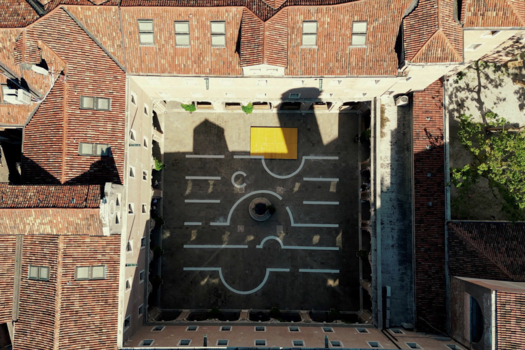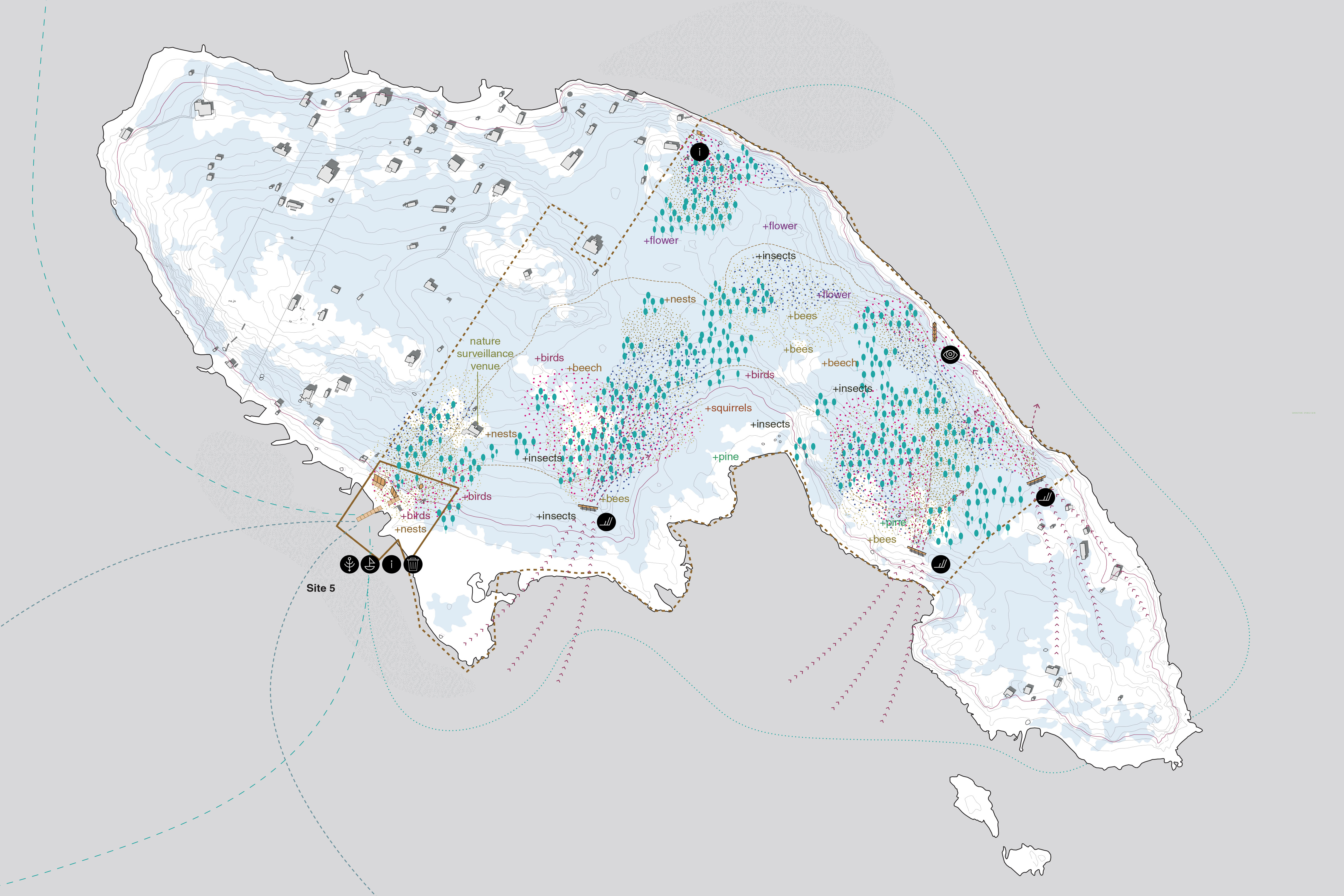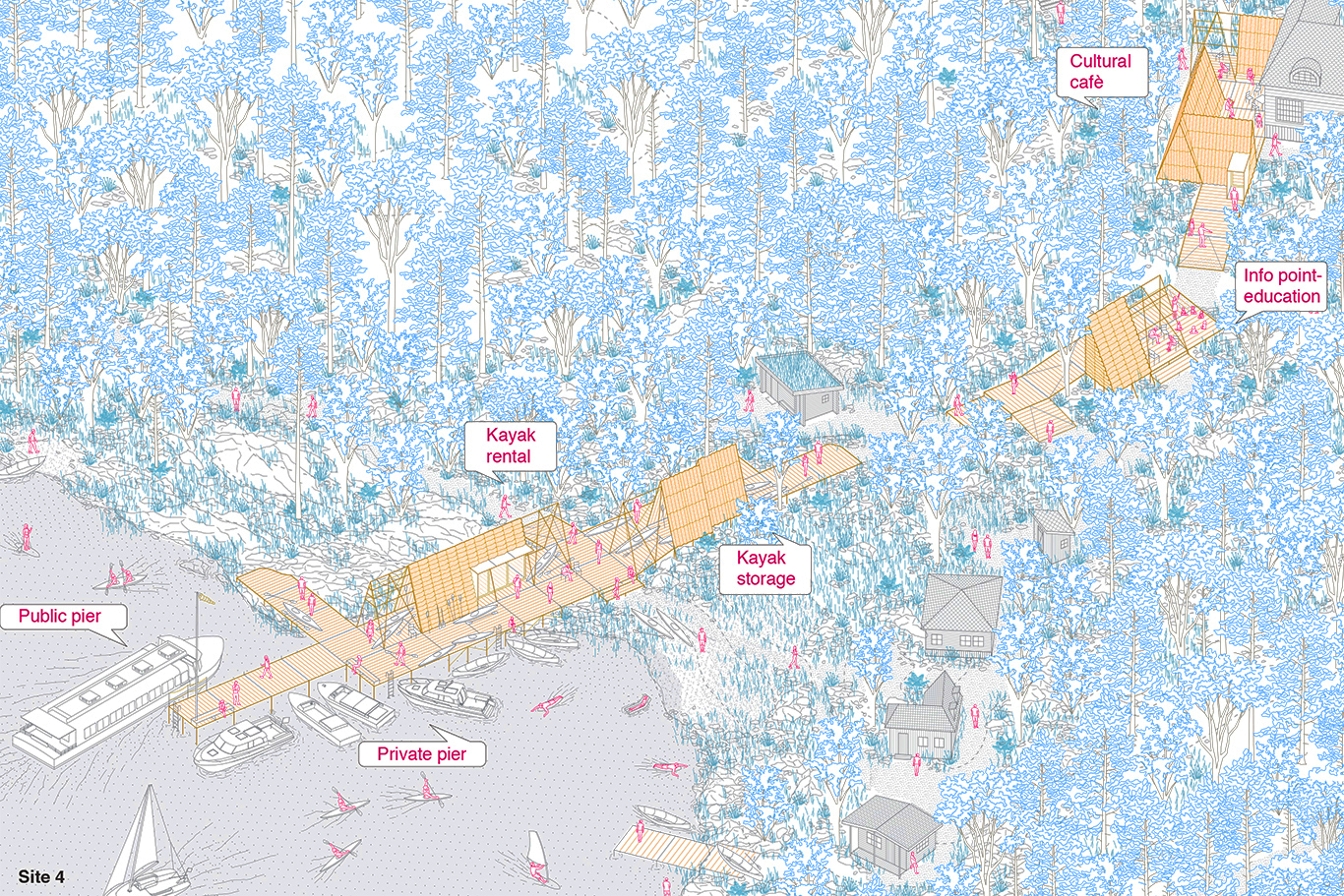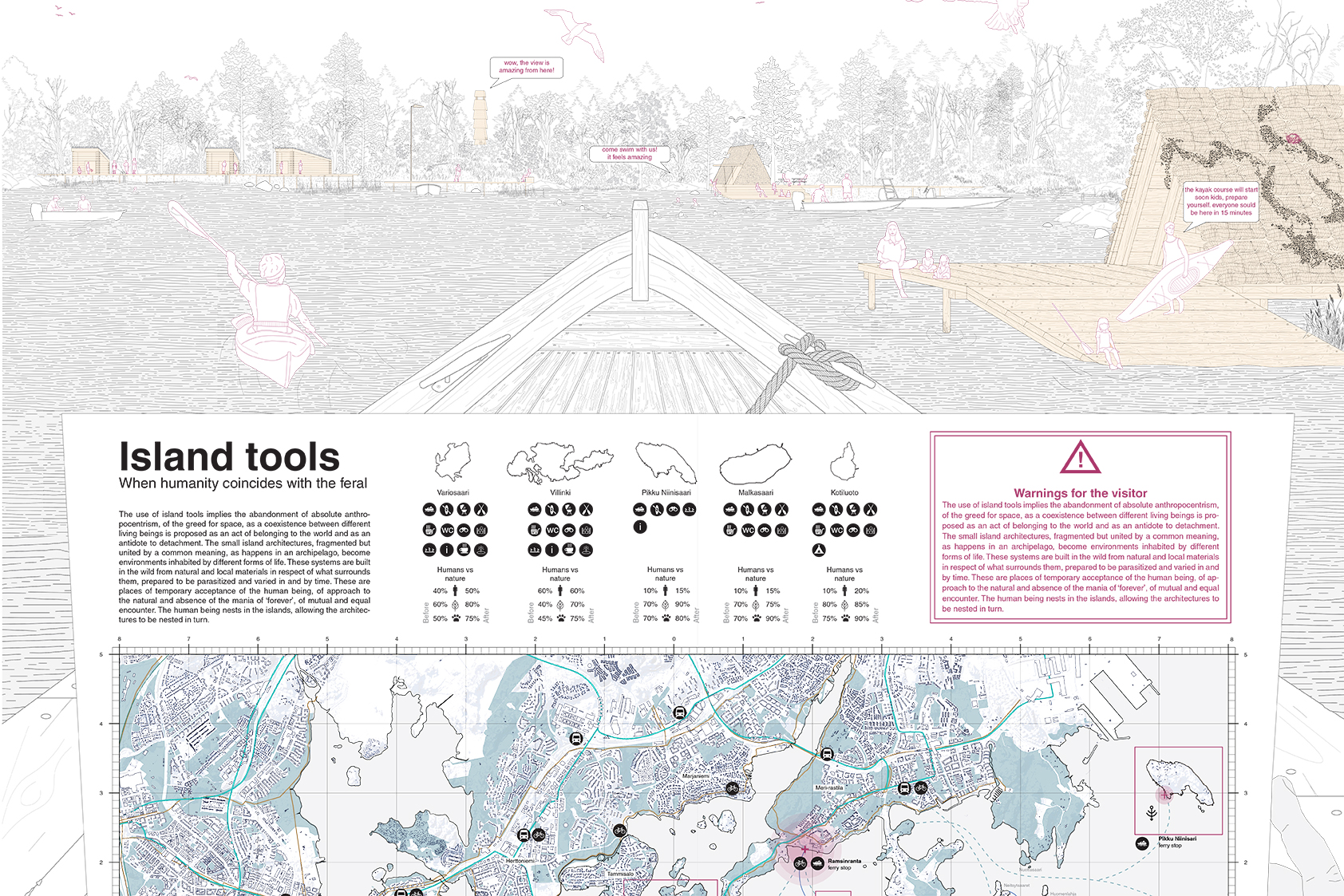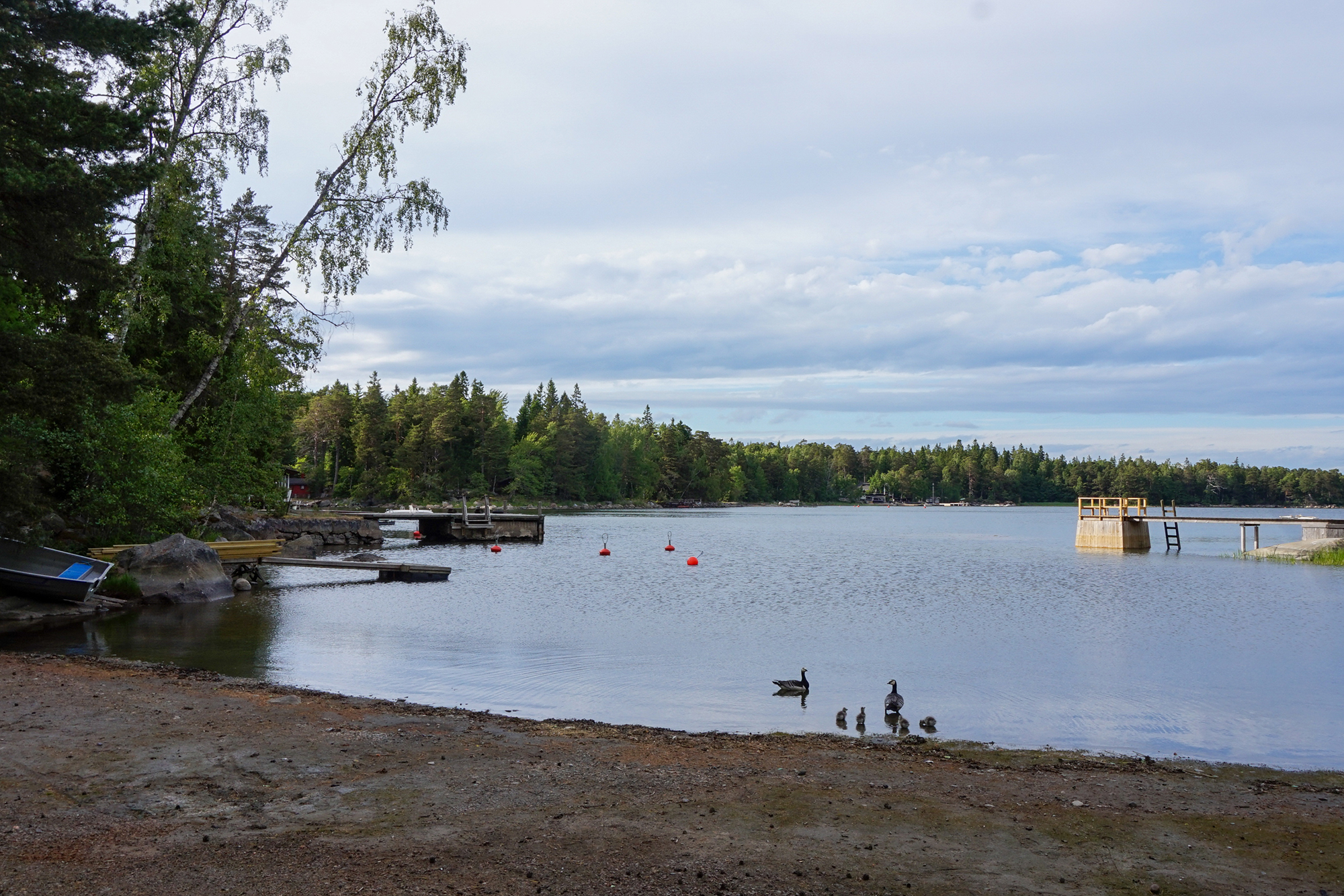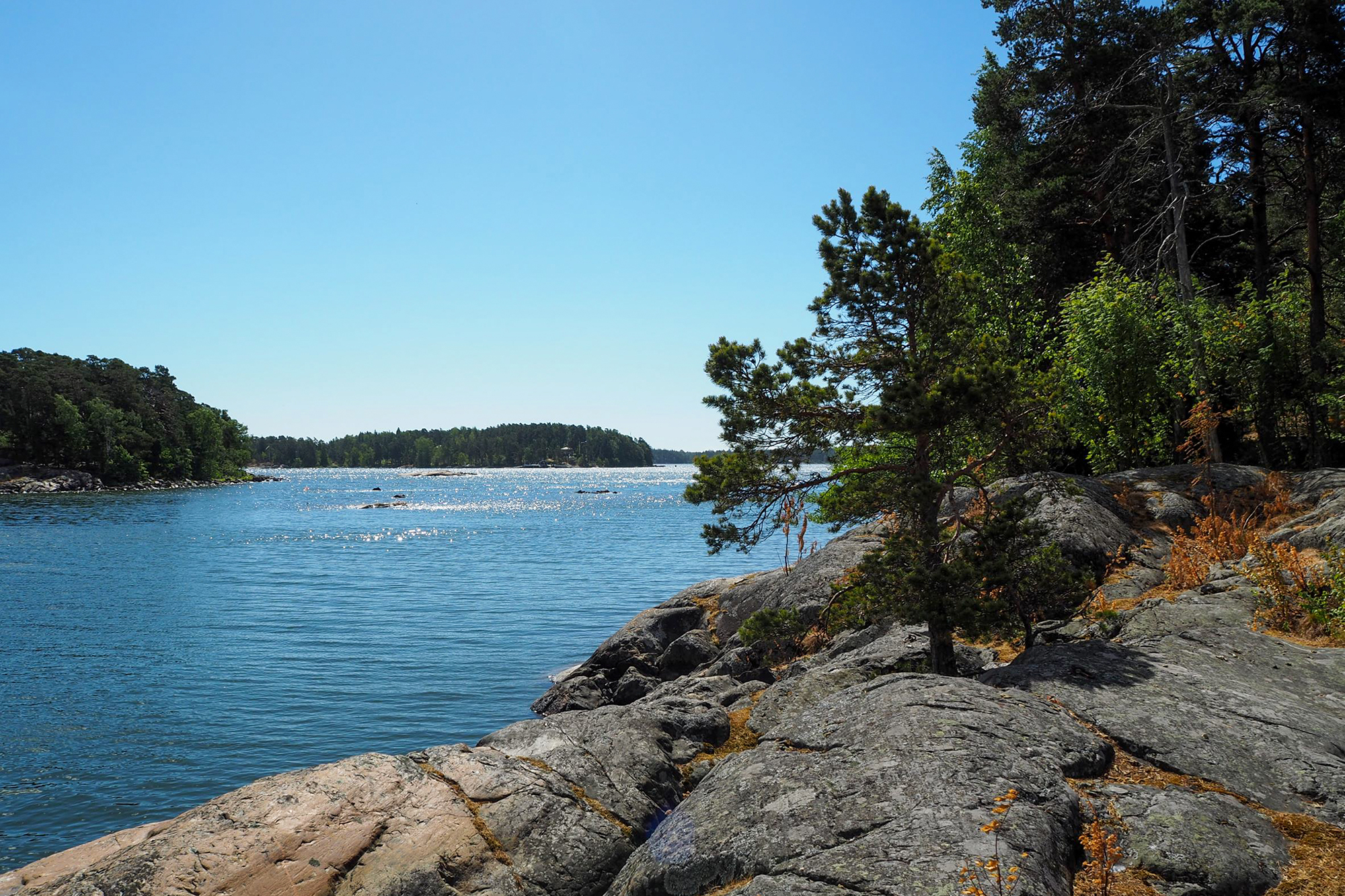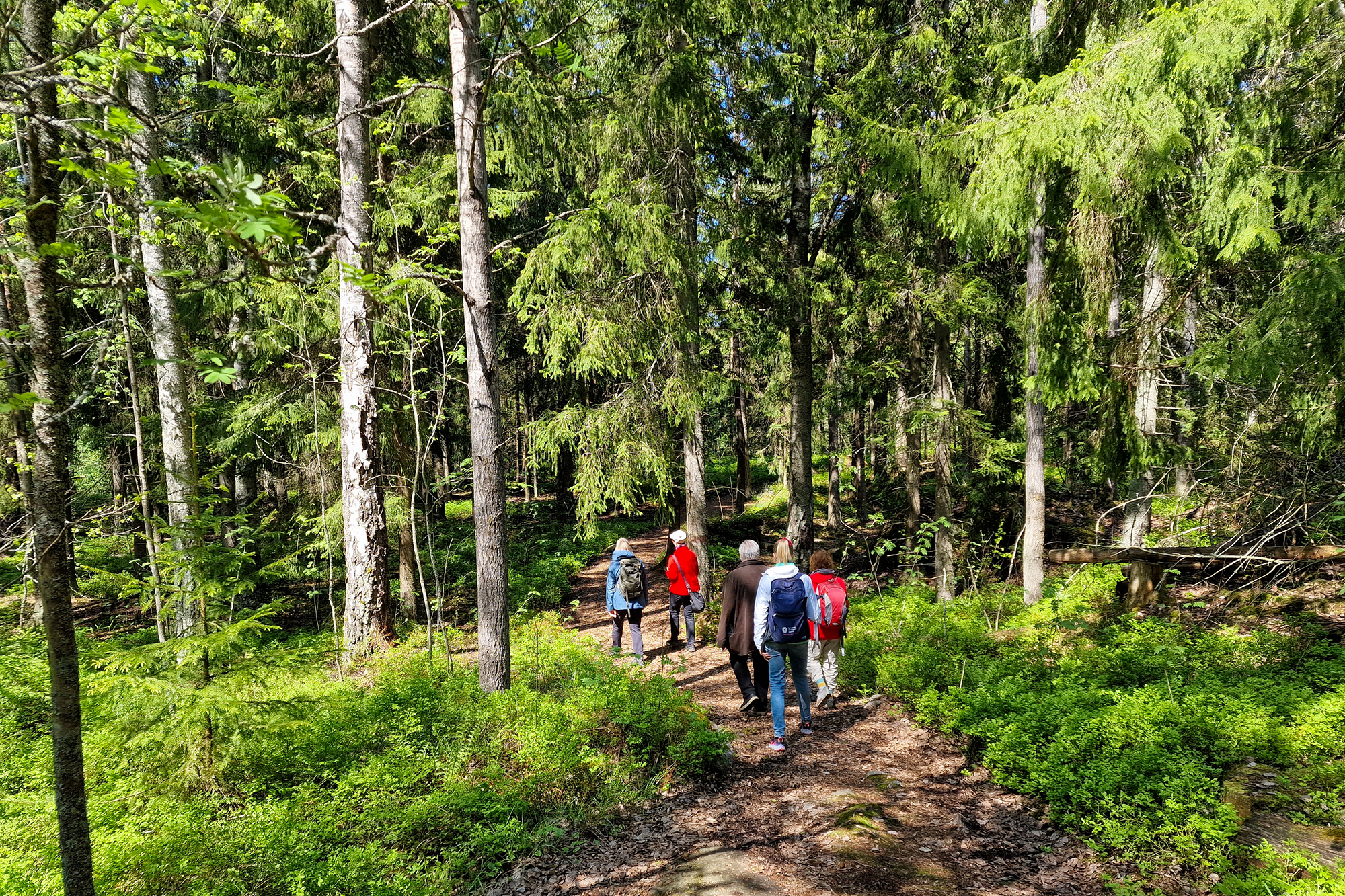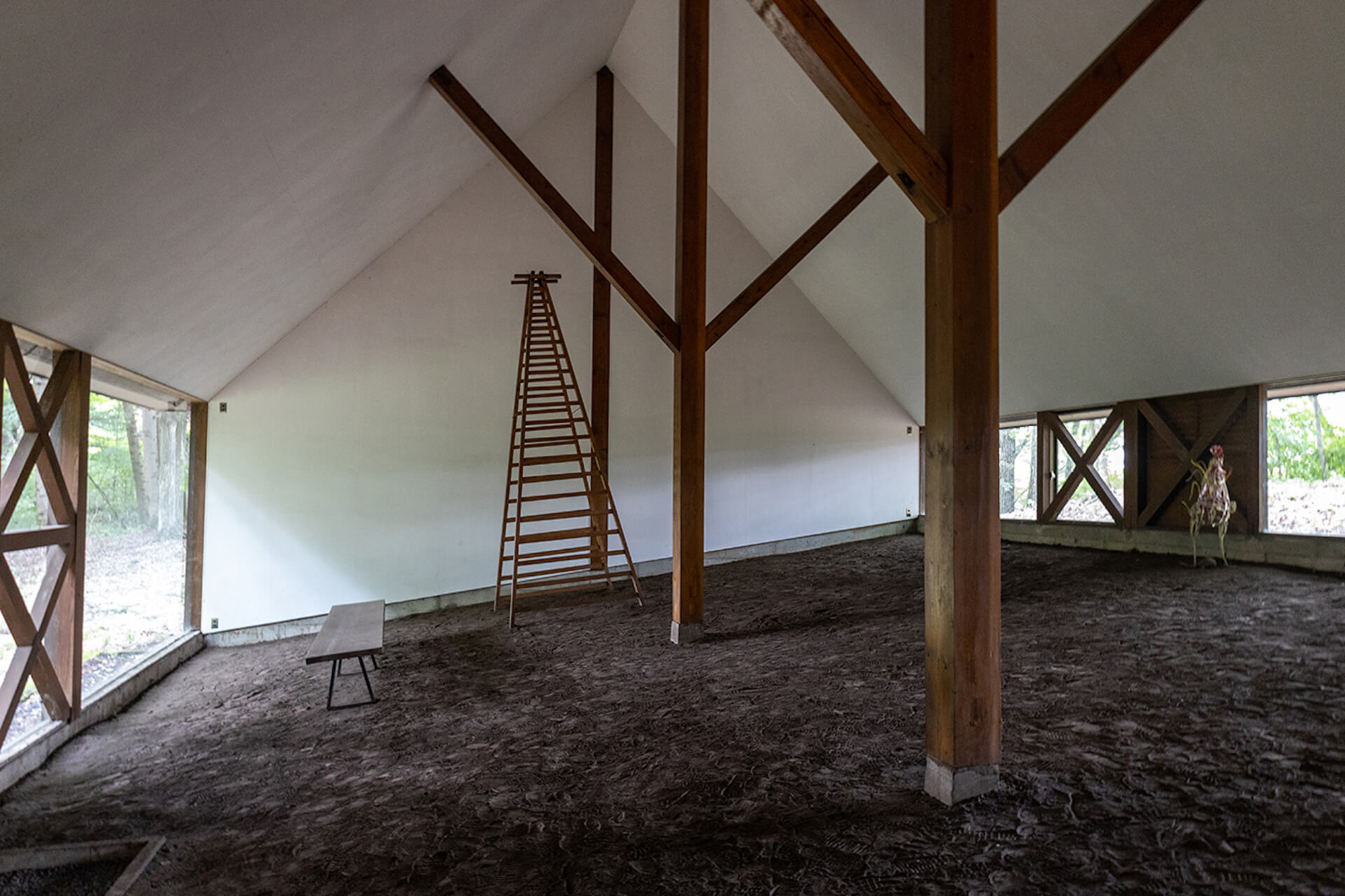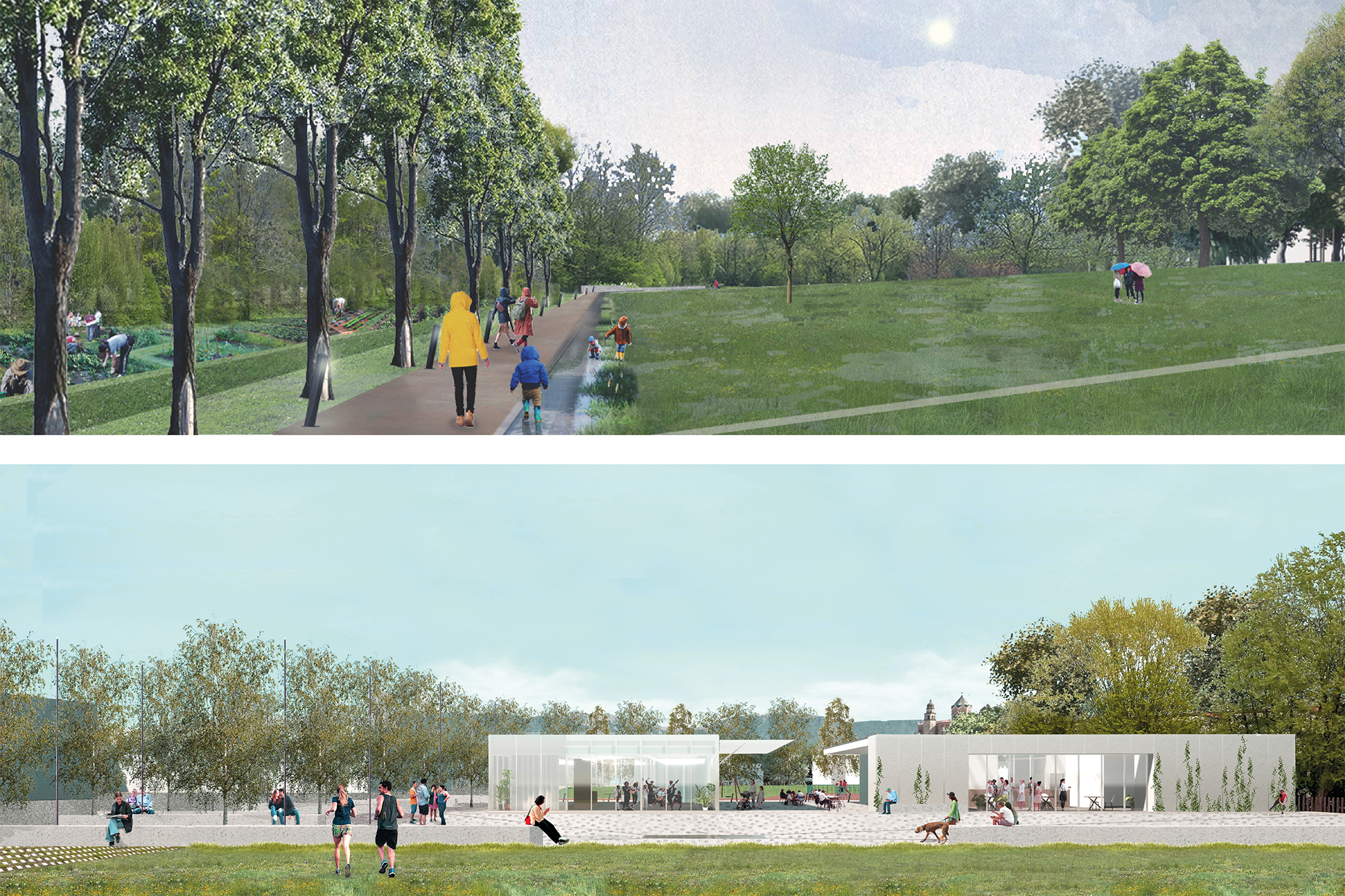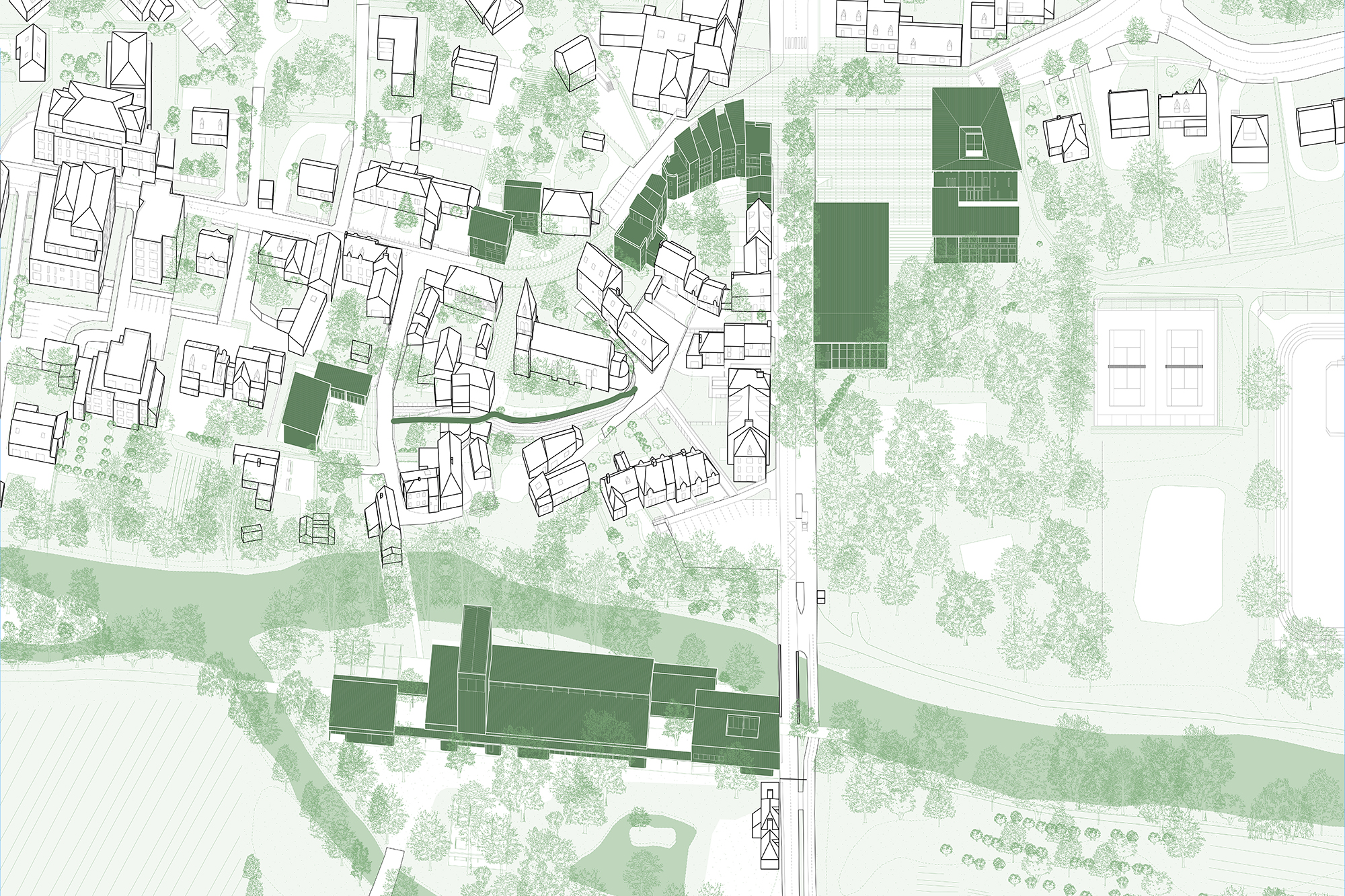Island tools
Helsinki (FI) - Special Mention
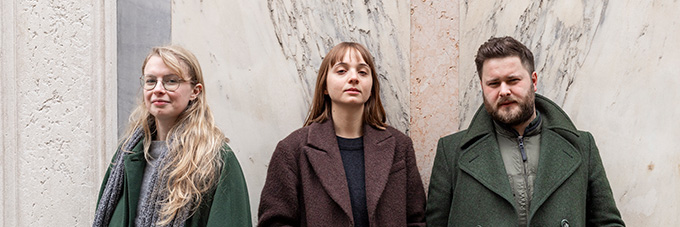
TEAM PORTRAIT
VIDEO (by the team)
INTERVIEW
Click on the images to enlarge
1. How do you define the main issue of your project in relation with the theme “Living Cities Imagining architecture taking care of the milieus”? And in which way do you think your project can contribute to an ecological and/or social evolution?
Instead of immediately starting with a fixed project, we decided to dive deep into the topic of the unbalanced coexistence between humans and natural environment with its inhabitants. We asked ourselves: what if we, as humans, start to think that buildings are not just for us but also for other existing beings? This could be the starting point for a social, ecological and architectural evolution. This new mindset should bring along materials and shapes that are not only site specific and with a low impact, but also welcoming for multiple inhabitants. The human being nests in the islands, allowing the architectures to be nested in turn. The project embraces different actors and time as an architectural tool, able to let the new balance grow and deepen through the passing of days, months, years. Questioning time, in the process of use and in the future remains of our actions, could be seen as another way of questioning anthropocentrism to find another way to live on this planet. This approach has been a good exercise for us to answer the request of a project that takes care of milieus by deeply understanding them and not imposing ourselves on the areas we build in.
2. How did the issues of your design and the questions raised by the site mutation meet?
Designing for tourism and questioning about how to better care about milieus is not always easy to manage. We strongly believe, or want to believe, that if we start to think that the places that we live in are not just for us, we will probably act differently when experiencing natural habitats. Our projects aims to grow an affection to nature, towards a new balance that brings us not to observe with distance or overuse, but to coexist with habitats and its inhabitants. This affection and this equality could bring to a mindful and respectful slow tourism of the Helsinki archipelago.
PROJECT:



We had the chance to question ourselves about those topics in other natural environments in our country during the master thesis. We worked on the ‘architecture of the mountain’, thinking about a balanced and site specific way to design architectures made to live and experience the Dolomite mountains in north-east Italy. That was the starting point for us to shift the way we look at architecture and natural environments, looking for an architecture that is against overuse and looks for a deeper understanding of a needed balance between humans, animals and other beings by interpreting traditional architectural shapes and questioning about time as a project tool.
SITE:



Our approach is all about negotiation and about questioning ourselves to find a balanced way of existing through time. This approach could find different ways and shapes in specific relation to the site and the needs that would emerge during a negotiate process. That problem is part of our starting point. Also, the modular essence of the project makes it easy to enlarge architectures in relation to how much they are frequented, always remembering that we need a good limit to our occupation of the islands.
REFERENCES:
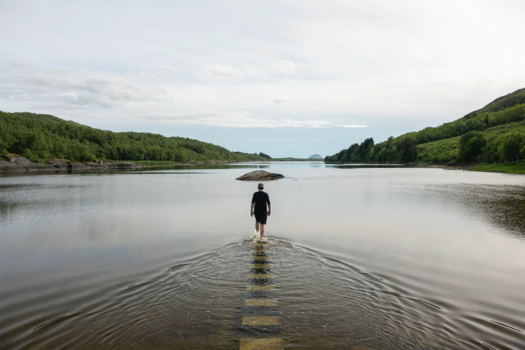


We are very good friends so that was easy for us to start discussing about E17 topics when we met. We have very different ways of interpreting the discipline, different points of view and different work experiences that shaped every one of us as individuals and strengthened everyone on different aspects. Roughly, one of us has a deep understanding of architectural composition to the scale of the building, the second had a good experience in landscape architecture and has a good knowledge when dealing with large scale projects and planning, the third one is more about always reading the context questioning what we are doing and why. We are different but also have a deep interest in common and admire each other as professionals.
6. How could this prize help you in your professional career?
Having opportunities to practice and grow as professionals is always something positive. Surely the mention made us understand if we are on the right path and which next steps to take to strengthen and get to even better projects. This has been also useful to show ourselves that the effort we put was and is worth it. Designers are always on a process of learning and this has been a good signal for us and for the career we believe in, to have more energy to pun in the next chances we will meet.
TEAM IDENTITY
Legal status:
Team name:
Average age of the associates: 27 years old
Has your team, together or separately, already conceived or implemented some projects and/or won any competition? if so, which ones?
- Urban regeneration in Via Isidoro Mel and Via degli Alpini, Treviso – 1st prize and in progress
- Urban regeneration of Piazza Martiri 25 luglio 1944 in San Piero in Bagno, Forlì – 2nd prize
WORKS:


